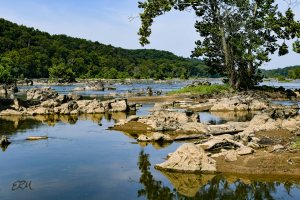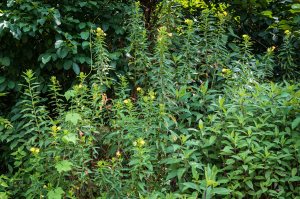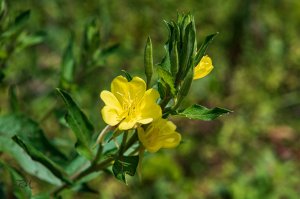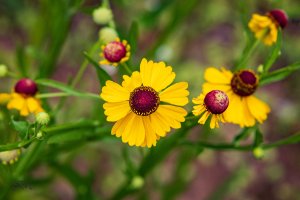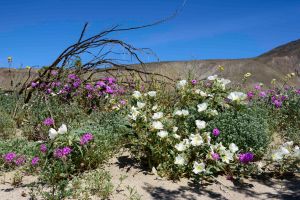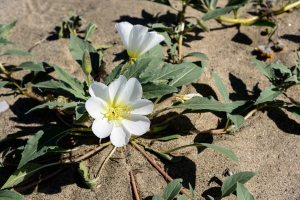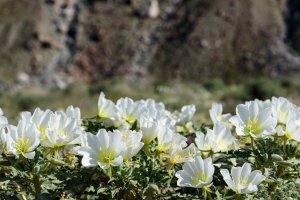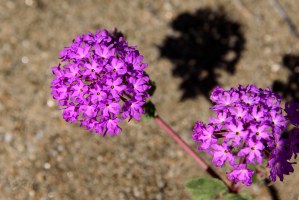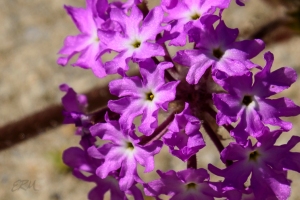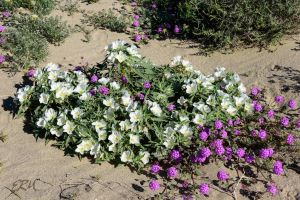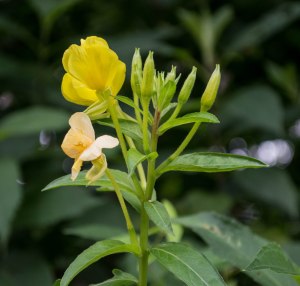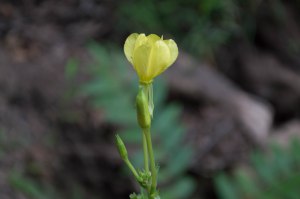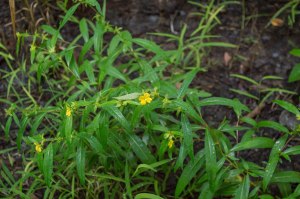Spring is the time for the small, subtle things that emerge, grow, leaf out, bloom, fade, and die back to the ground before you know it. For many ephemeral species, you have two weeks at best to see the flowers.
Summer, though… Summer is the time for big, showy, outrageous things. Plants taller than you are (joe-pye weed), leaves bigger than your hand (hairy leafcup), lurid colors (cardinal flower). Many of these you won’t find in the woods, where flowers tend to be small (jumpseed, Indian-tobacco). The showy plants tend to like sunlight, so look for them in open woodlands, or at woods’ edge, or in meadows, or best yet, along riverbanks.
That’s where I was last Monday and Tuesday. The weather was so nice, I couldn’t resist going to the Potomac Gorge to do some botanizing. Scrambling down steep banks and treading along the waterline I found over 40 different species of plants in flower.
Today I’m going to focus on the large yellow ones.
Common evening primrose (Oenothera biennis; Onagraceae) is found in every county in Maryland and most of the US. It can grow over 6 feet tall in a variety of habitats. It’s hard to say how tall these were, as they were growing up a steep slope, but the ones closest to me were at least 5 feet.
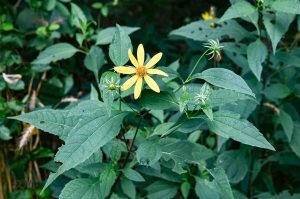 Thin-leaved sunflower (Helianthus decapetalus; Asteraceae) is what we call a DYC*; these species can be difficult to distinguish, but this one can be identified by bracts under the flower head that exceed the width of the disk (click on the image to see it larger) and very long, narrow leaf tips (“acuminate” is the technical term). The specific epithet is not to be taken literally; the typical ray floret (“petal”) count is in the range of 8 to 15.
Thin-leaved sunflower (Helianthus decapetalus; Asteraceae) is what we call a DYC*; these species can be difficult to distinguish, but this one can be identified by bracts under the flower head that exceed the width of the disk (click on the image to see it larger) and very long, narrow leaf tips (“acuminate” is the technical term). The specific epithet is not to be taken literally; the typical ray floret (“petal”) count is in the range of 8 to 15.
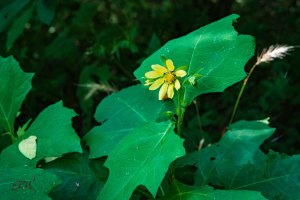 Hairy leafcup (Smallanthus uvedalia; Asteraceae) is another DYC, but this one is easily identified by the gigantic leaves with a unique shape. The few records in Maryland Biodiversity Project are mostly from the Coastal Plain and Piedmont, but a look at the USDA PLANTS Database distribution map makes me think that this species is under-reported. At any rate, I see hairy leafcup in the woods near openings in the canopy, close to the river but rarely in full sunlight. Usually I have to look up to see the flowers (I’m 5’5″ tall).
Hairy leafcup (Smallanthus uvedalia; Asteraceae) is another DYC, but this one is easily identified by the gigantic leaves with a unique shape. The few records in Maryland Biodiversity Project are mostly from the Coastal Plain and Piedmont, but a look at the USDA PLANTS Database distribution map makes me think that this species is under-reported. At any rate, I see hairy leafcup in the woods near openings in the canopy, close to the river but rarely in full sunlight. Usually I have to look up to see the flowers (I’m 5’5″ tall).
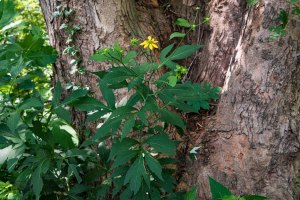 Here’s another big yellow astery thing: cut-leaved coneflower (Rudbeckia laciniata). The leaves make for easy field ID, but be sure to look at the whole plant; upper leaves are often much simpler in shape.
Here’s another big yellow astery thing: cut-leaved coneflower (Rudbeckia laciniata). The leaves make for easy field ID, but be sure to look at the whole plant; upper leaves are often much simpler in shape.
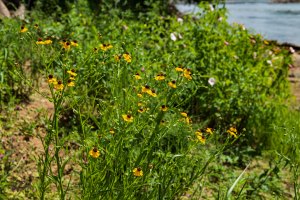 I was utterly thrilled to find this big, beautiful stand of purple-headed sneezeweed (Helenium flexuosum; Asteraceae) right by the river. Perfect habitat for this species: sunny and wet. How can you not love a flower with a name like that? Pearl crescent butterflies seem to love the flowers, too.
I was utterly thrilled to find this big, beautiful stand of purple-headed sneezeweed (Helenium flexuosum; Asteraceae) right by the river. Perfect habitat for this species: sunny and wet. How can you not love a flower with a name like that? Pearl crescent butterflies seem to love the flowers, too.
next time: big, showy, pink, purple
—————–
*damn yellow composite

